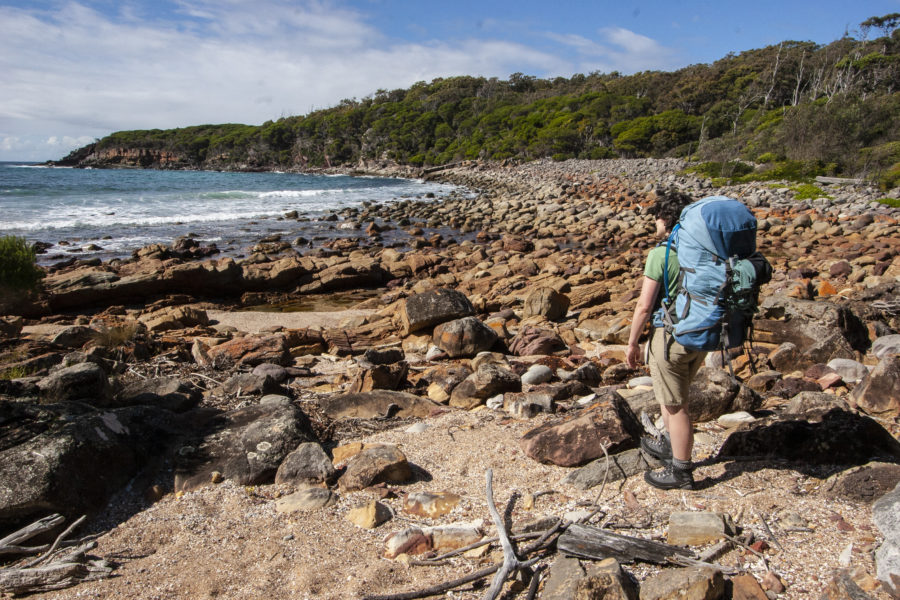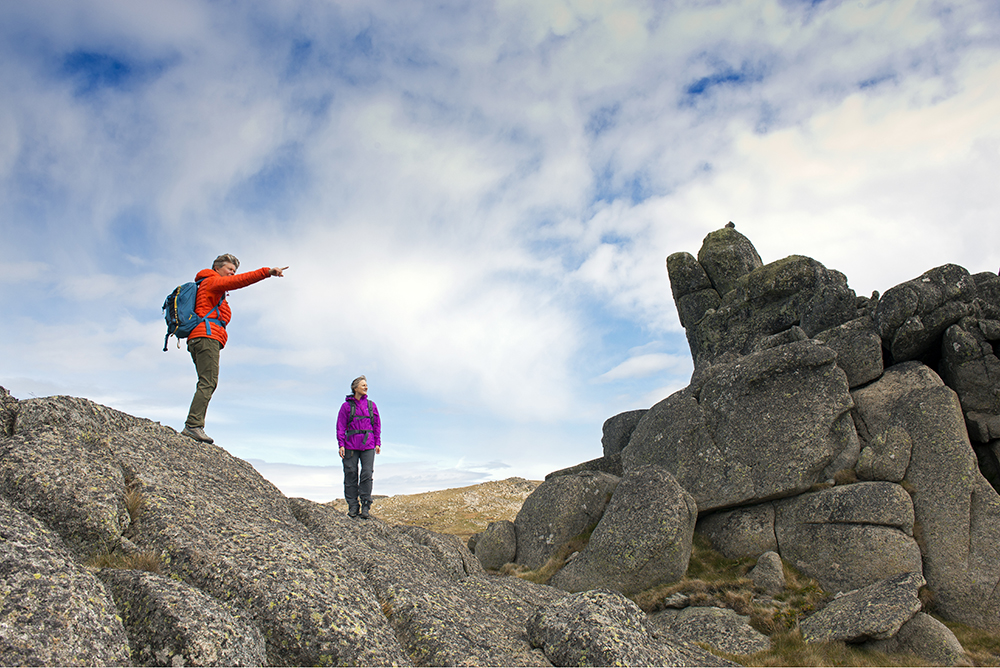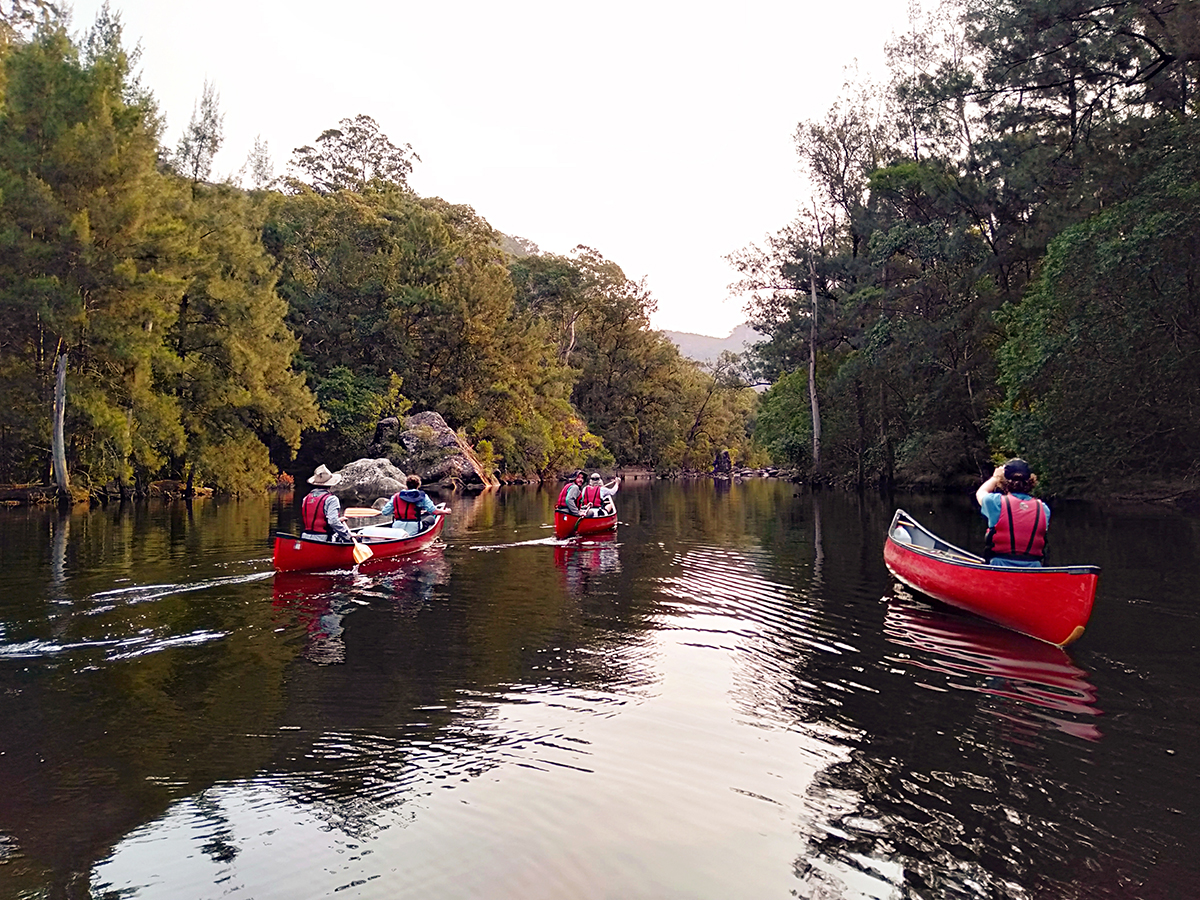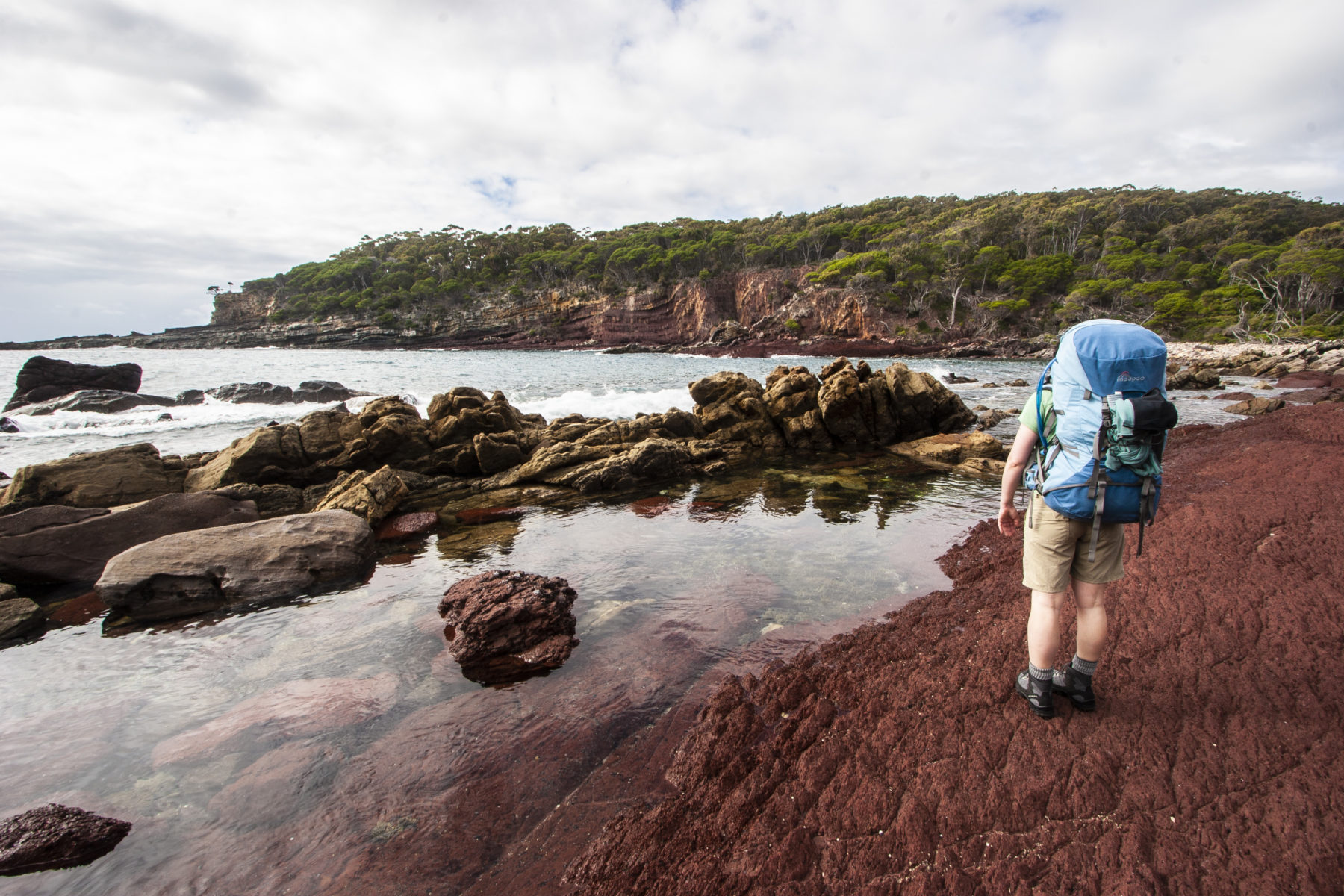Best outdoor escapes in NSW

The Snowy Mountains
The ‘Snowies’ are chock-full of adventure year-round and one of the most popular NSW adventure destinations. Located around five hours drive south of Sydney (one to 1.5 from Canberra), this mountainous region includes adventure towns such as Jindabyne and Cooma, plus the ski and mountain bike Mecca of Thredbo. Spend a few days – or preferably a week – seeking adventure down here and it will just be a taste of the vast amount of fun on offer, making the perfect excuse for a return trip.
From June to October, the Snowy Mountains region is – yep, you guessed it – a snow-sports centre, with skiing at Thredbo, Perisher and/or Guthega and – for the more experienced – plenty of backcountry slopes to explore and test yourself on. From November to May, it’s adventure central; activities on offer include mountain biking (Thredbo’s just-extended Thredbo Valley Trail is a must-ride), hiking, fly-fishing, paddling, swimming, 4WD touring and brilliant camping. If you don’t want to camp, there is a variety of accommodation types at Thredbo, Jindabyne and Cooma.
During the warmer months, hiking Mt Kosciuszko is a must. From the top of the chairlift begins a medium-difficulty climb to mainland Australia’s highest peak. The three- to four-hour round trip covers spectacular alpine terrain and the view from the summit lookout, across the roof of Australia, is unforgettable. Guided walks are available from Thredbo and hikes to Charlotte Pass and Blue Lake are worth checking out as well.

Photo: Don Fuchs.
Bike tracks around Thredbo and Jindabyne are suitable for everyone from beginners to pros and the trail networks here have expanded significantly over the last few years, so there’s plenty to keep riders busy. Thredbo’s trail network is awesome; whether you’re a beginner or hard-core downhiller, the resort’s ever-expanding MTB trail network has something for you. Add in the expanding trails around Jindabyne and another trail network at Cooma (just east of town on the Snowy Mountains Highway) and the region doesn’t disappoint for mountain bikers.
For paddlers, Alpine River Adventures offers five- or seven-day journeys along sections of the Snowy River, plus it also runs day-trips – the ideal way for beginners or those with less time in the region to still get out on this famous waterway. See Alpine River Adventures for more info.
Fact File
Getting there: The Snowy Mountains region is five to six hours drive south of Sydney, via the Hume Highway, then the Monaro Highway via Canberra, on to Cooma, Jindabyne and Thredbo. For supplies, food and accommodation, the major centres are Cooma, Jindabyne and Thredbo.
Accommodation: Cooma and Jindabyne consist mainly of holiday accommodation, ranging from unpowered campground sites to five star. While Thredbo Resort is expensive, it does put you right in the centre of the action. There are numerous campgrounds in Kosciuszko NP (plus a couple of cabins available for hire from NPWS) and it’s best to book early for the summer season. You will also need to pay a national park entry fee when you enter the park (you can get a day pass, or a longer duration pass).
More info: Visit NSW Snowy Mountains.
Kangaroo Valley
Kangaroo Valley is midway between Moss Vale and Nowra, southwest of Sydney. But the only way to get to the heart of the valley is by foot or canoe.
If you don’t mind dipping a paddle, launch your canoe onto Lake Yarrunga at Tallowa Dam, or paddle down Kangaroo River (you can hire canoes in town, or bring your own), leaving from under historic Hampden Bridge (the country’s oldest suspension bridge) and paddling 6km downriver (keeping an eye out for birdlife and platypus on the way) before finishing at Bendeela picnic area where you can either be picked up (after pre-arranging a shuttle vehicle) or, if you’ve packed your camping gear, you can doss down here in the campground for the night, beside the river.
For those looking for their own unique paddling adventure, Paddle and Portage Canoes offers bespoke canoe trips of any length. Plus it also hires out canoes. See Paddle & Portage Canoes for more info.

Take to the hills, meander along the river or venture through the forests via the various walking tracks. There are different kinds of walks to suit every level of fitness/age.
Whether you’re an experienced mountain biker or a beginner (or riding with kids), there are a number of tracks within both Morton National Park and around the village as well. Some follow sealed roads while others are a more technical. A longer – but graded easy/medium – ride is Upper Kangaroo River Road (24.4km return). Allow between half and a full day.
Fact File
Getting there: Kangaroo Valley is around two hours drive south of Sydney. Take the Hume Highway and then Old Hume Highway towards Mittagong, then follow signs to Nowra before turning left on State Route 79.
Accommodation: Camping is available at Bendeela Campground. The Kangaroo Valley Tourist Park has a number of self-contained cabins, powered and unpowered camping sites, as well as barbecues areas, river access, playground and volleyball and basketball courts.
More info: For more info on Kangaroo Valley and the surrounding Shoalhaven region, see Visit NSW Kangaroo Valley.
Greater Blue Mountains World Heritage Area
Sydney-siders are often guilty of ignoring what is one of this country’s best adventure destinations, in the form of the Blue Mountain World Heritage Area. This wild, rugged region contains a shed-load of great hiking experiences, sublime camping and world-renowned rock-climbing – and it’s all only a bit more than an hour from Australia’s largest capital city!
With numerous pretty mountain villages dotted around the Blue Mountains National Park, it’s super easy to make this destination the perfect – and highly repeatable – family adventure, with a number of guiding companies located in the ‘Blueys’ who can cater for any adventure request, whether it is climbing, hiking or canyoneering (one of the Blue Mountains signature adventures). These companies also offer itineraries suited to different skills/ages, etc.

Photo: Jake Anderson
Got a week? If you have, then make sure you spend it fully immersed in this epic bushwalking playground. Start off by spending a couple of days tackling the myriad day walks near Katoomba, including some of the best cliff-side tracks, such as the historical National Pass. Up the ante and head further west to Blackheath and the Grose Valley’s track network. Here, walks range from a couple of hours (the Grand Canyon Walk is brilliant), through to one of the most popular overnight treks – the Blue Gum Forest, which entails a descent into the Grose Valley via Govetts Leap, before you encounter beautiful waterfalls and creeks, as well as lush eucalypt bushland as you follow Govetts Creek down to Acacia campground.
And don’t forget the Six Foot Track. This three-day, 44km (one way) trek starts at the historic Explorers Tree (between Katoomba and Medlow Bath, just beside the Great Western Highway) and is for the more experienced walker. This track is fantastic, with well-positioned campsites (some with toilets) and that sensation of being right out in the wilderness – well away from the bustling tourist throngs in the Blueys’ villages.
Fact File
Getting there: The Blue Mountains region is one to 1.5 hours west of Sydney, via the M4 motorway. For adventurers, Katoomba is probably the closest thing to “Adventure HQ” here, with a number of guiding companies based in the Blueys’ pseudo-capital.
Accommodation: Everything from swish bed and breakfast cottages, to youth hostels, to national park campgrounds are on offer in the Blue Mountains region. The national park has a few campsites but, as with most popular destinations, it is best to plan and then book well before your trip.
More info: See Visit NSW Blue Mountains and NSW National Parks.
Sapphire Coast
This far southern section of the New South Wales coast has one of the highest densities of national parks in Australia. Spending a week or more over summer, idling your way down the Princes Highway, from the northern point of Cobargo to the southern end at Wonboyn (or in reverse if you’re coming from Victoria), there is a multitude of family-friendly adventures and some great accommodation options, ranging from bush campsites to caravan parks to B&Bs.
The beachside town of Tathra, in the northern section (about five hours drive south of Sydney) is famous not only for its beaches (think: surfing, SUP, diving) but increasingly for two-wheeled activity. Behind the town, forests hide over 50km of mountain bike trails for all skills and age levels. Further south, Merimbula and Pambula provide surfing and fishing opportunities, as well as the chance to spot migrating whales.
Eden, the famous “killer whale town” (thanks to its whaling history, which includes the unique relationship that formed between whalers and a pod of orca), looks out over Twofold Bay. There’s great fishing and plenty of scuba diving/snorkelling here, plus more whale watching, and sea kayaking. October is prime whale-watching time, so head south for the chance to spot the majestic migrating mammals.
For the little adventurers, the Sapphire Coast Marine Discovery Centre, nestled beside Snug Cove in Eden, holds a number of kids’ activities over the summer holidays, including a Snorkel Discovery Tour exploring waterways in Eden’s Snug Cove, or Merimbula. For trekkers, the two-day Light to Light Walk, in Ben Boyd NP, is actually still closed due to bushfire damage but you can still explore this great national park on day trips and day hikes. Just to the west of the Sapphire Coast is the massive South East Forests National Park, with opportunities for 4WD touring, canoeing, bushwalking and riverside campsites.

The fishing hotspot of Wonboyn is the southern-most village on the Sapphire Coast. It is also the entry point to Nadgee Nature Reserve, itself an outdoors fanatic’s dream. Here, in the reserve’s 20,671 hectares, you will find numerous hiking tracks (including the mighty 55km-long Nadgee Wilderness Walk), plenty of wilderness camping and magical beach swimming. Just make sure to check access to this reserve as it was severely damaged during the summer bushfires.
Fact File
Getting there: Cobargo (the northern tip of the Sapphire Coast) is five hours south of Sydney, via the Princes Highway, with Bega, Merimbula, and Eden all spaced about 20 minutes apart as you continue south. Eden is around six hours northeast of Melbourne, via the Princes Highway. Regional Express (REX) offers daily flights from Sydney and Melbourne to Merimbula (around three to four a day, depending on the season).
Accommodation: There are numerous camping grounds, caravan parks and motel/hotels on the Sapphire Coast. It is very busy in summer (and Easter) so book well ahead. The major centres – Bega, Merimbula, Eden – all have camping/outdoor stores. Camping fees apply in the area’s national parks.
More info: See Sapphire Coast and NSW National Parks.

